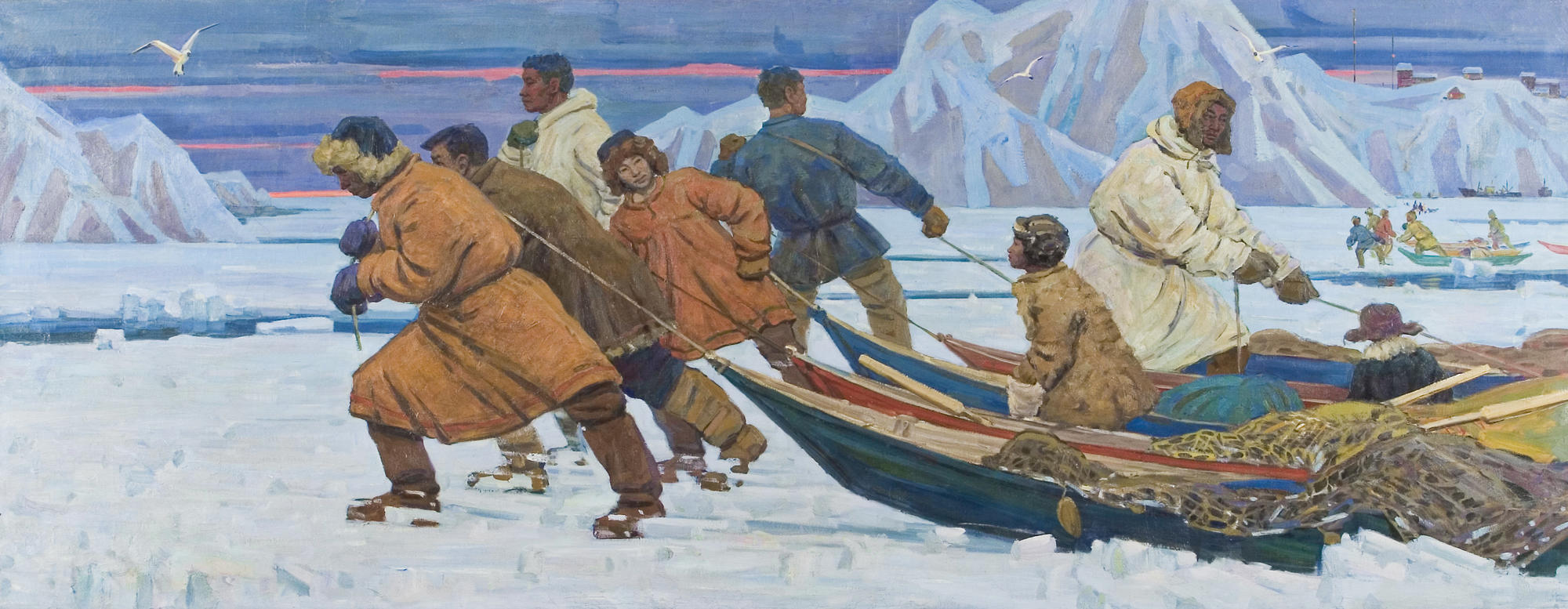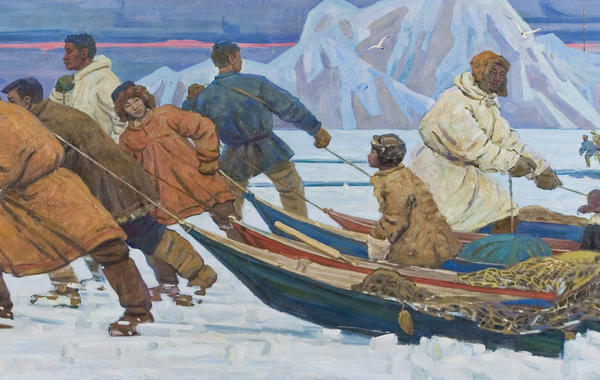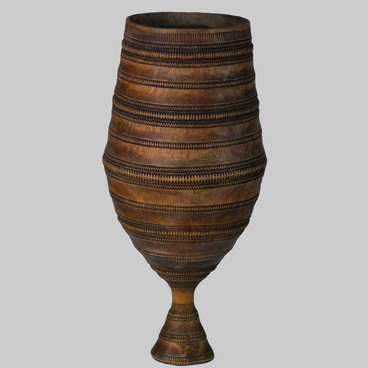Yakut artist Mikhail Lukin painted 'The Indigirka Fishermen' in 1963. He depicted the traditional occupation of the Northern peoples - winter fishing on the Indigirka River. The name of the river is derived from the word 'indigir', which was the name of the people who belonged to an ancient Evenk family of the Indies.
For inhabitants of the North, fishing has always been their main trade and the primary way of getting food. In winter fishermen hunted in harsh weather conditions, surrounded by snow and ice. To move around, they used special dugout boats, which were carved from solid logs and repeated their natural shape. Therefore, such vessels glided equally well through the water and on the snow.
Lukin dedicated the painting to the topic of traditional folk labour. The composition of the Indigirka Fishermen is structured horizontally. In the foreground, men in winter hareskin coats are pulling forward boats with fishing tackle. Behind them Lukin has outlined the silhouettes of another group of fishermen. And still further one sees a northern winter landscape: snow-covered mountain ranges and the blue-and-pink sunset sky.
To create rhythm in the picture, Lukin used contrasting techniques. He painted the figures of fishermen with rich dark colors - brown, blue, orange and ochre, while for the landscape he used cold shades of white and blue. Apart from the contrast of colours, the artist used different stroke techniques. Wide, sweeping brush movements increased the monumentality of natural background, whereas thin, jagged and graphic silhouettes of men emphasized the dynamism of the images.
Lukin’s later works, including 'The Indigirka Fishermen', were influenced by the 'austere style', which was an artistic phenomenon in the Soviet art of the 1950s - 1960s. The adepts of this artistic trend often depicted ordinary people as 'heroes of everyday work'. The 'austere style' paintings were characterized by clear linear contours of figures and large planes of colour.
The Indigirka Fishermen demonstrate the life of northern peoples in harmony with nature. The artist romanticized and magnified the hard work of fishermen. Despite the harsh climate, they go fishing, and make their way to the river through snow and ice. For this picture Lukin chose one specific fishing episode and transformed it into a symbol of the Northern people’s labour and tenacity.



